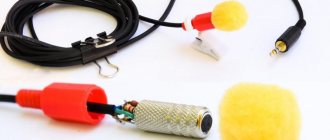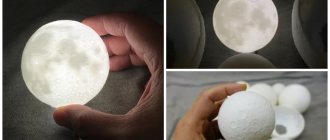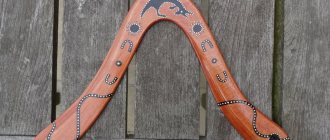The capsules in which Kinder Surprise toys are stored have the ideal color and shape for crafts in the form of minions. With simple tools and nail polish, you can make minion-shaped pepper shakers and salt shakers. Or you can just paint a few capsules and make an army of your own minions. For work you will need: - Kinder Surprise capsules, washed from chocolate and dried; — a large needle or awl (they must be used very carefully, observing safety precautions; our little visitors should ask their parents for help); - thin tape; - toothpicks; - nail polishes (or acrylic paints) in white, black and blue. First of all, you need to make several holes in a clean capsule (in its upper part) from the Kinder Surprise, this must be done very carefully. After this, it is better to rinse the capsule again in clean water to wash out any particles of plastic that may have crumbled when creating holes.
Now take a thin strip of tape and wrap it around the bottom of the capsule.
Take blue nail polish (or acrylic paints) and carefully cover the bottom of the capsule in three layers. Let the varnish dry. The face for a one-eyed minion, as well as for a two-eyed one, is drawn using the same method. Only the location and size of the eyes will be slightly different. First, a circle is drawn with white varnish. Then, after the varnish has dried, use a toothpick to draw a border around the white circle with black varnish. After this, apply a layer of blue varnish in the same thin line. Then draw a black outline again and use a toothpick to draw a pupil in the center. Using the same method, paint the strap with black paint. All that remains is to draw the mouth (smiling, sad, surprised...). and also use white paint to draw the letter “C” or “P” to indicate a pepper shaker or salt shaker.
Turning is still very common today and is a very interesting activity during which you can give the workpiece a unique and original look. In this article I will tell you how the author made a salt shaker box on his wood lathe. The material was chosen quite correctly, acacia in this case will look very good because of its greenish color, and after sanding it to a shine, mother-of-pearl will be visible on the walls, which will give the salt shaker even more aesthetics. In the manufacture of this homemade product, you will need some initial skills in working with a wood lathe, however, the basics of working on it are taught in labor lessons in high school, so if you have not skipped these classes, this will only be beneficial. Now let’s decide what exactly is needed to make this salt shaker.
To make a salt shaker on a lathe, you will need:
* The wood lathe itself. * Cutters made from files, which are more than strong enough. * Wooden blank from acacia. * Hacksaw for metal. * Varnish for wooden products. * Wax mastic. * Sandpaper.
The materials and machine are ready to go, so let's get started.
Step one.
The first step is to fix the wooden workpiece into a three-jaw chuck; if the original part has the shape of a square, then use a knife to grind off the ends, thereby making one side round, after which we tighten the workpiece in the chuck. Now we start the machine engine and process the ends to make a cylindrical workpiece, we do this using a semicircular cutter.
Step two.
In the case of a semicircular cutter, it will not be possible to achieve a smooth surface, so we replace it with a jamb cutter, which will give the desired result.
Step three.
Each homemade item has its own originality and uniqueness, so in order to give it a decorative look and a unique style, we cut out indentations with a jamb cutter, which will distinguish your homemade product from others.
Step four.
The time has come for design ideas, figure out what your salt shaker should be like, you can also sketch out sketches and make a drawing. We make convex patterns on both sides of the recesses. We round off the finished edges.
Step five.
Like all salt shakers, ours should also have an internal cavity where the salt will be placed.
In this case, so that there is a stop, we turn the tool rest 90 degrees. Taking a straight narrow cutter in our hands, we begin to deepen it, leading from the center to the edge, the main thing is to move the cutter smoothly, avoiding strong pressure into the workpiece, otherwise a scuff or, worse, a crack may appear on the surface. To gradually deepen the cutter, we do this step by step, removing layer by layer. Step six.
Now you need to expand the internal cavity with the tip of a triangular cutter, while the movements of the cutter should be smooth from the center to the edge, and don’t forget about the bottom.
Step seven.
Armed with a cutter with a wide cutting edge, we level it and also give it the required thickness, then we make a seat for installing the cover.
Step eight.
Any work with wood is not complete without sanding, so we sand the edges and bottom of the finished part, gradually reducing the grit of sandpaper, the final one being zero.
Step nine.
After making sure that everything is well sanded, you can cut off the finished salt shaker from the excess part. This is done with the machine turned on, moving the hacksaw away from you onto the part, but be careful and monitor the process, preventing the blade from overheating. Without finishing a little, turn off the machine and release the excess part.
Step ten.
In order for the salt shaker to be full-fledged, it needs to have a lid; the author’s choice fell on a dome-shaped shape.
All landing dimensions must match; if necessary, adjust the inner diameter of the salt shaker. For simplicity, we check for accuracy of fit. Step eleven.
We cut out a dome-shaped recess inside the lid using a semicircular cutter.
Master class on decoupage of a wooden salt shaker with your own hands: We’ll tell you, with step-by-step photographs, how to update a wooden salt shaker and give it a second life
Surely many of you still have an old wooden salt shaker. You shouldn't throw it away. It can still serve you for a long time. Try updating it using decoupage technique.
Necessary materials for decoupage salt shaker:
- Wooden salt shaker
- Solvent
- Three-layer napkin (card for decoupage)
- Decoupage glue (or PVA diluted with water 1:1)
- White acrylic paint
- Acrylic varnish
So, how to make decoupage of a wooden salt shaker with your own hands:
First, you need to clean the salt shaker from dirt, grease and dust. To do this, apply the solvent to a small area with a brush, wait a little and scrape off the varnish and deposits with a knife. So, section by section, you will clean the entire salt shaker. The inside should be washed from salt with water. If you plan to store salt in a salt shaker, then the inner surface should be left untouched after washing.
After the surface is cleaned, you need to coat the salt shaker twice with white acrylic paint.
Then take a napkin and tear out the necessary fragments from it. Separate two layers of white paper from them. In order to glue a fragment, attach it to the surface in the right place and carefully apply decoupage glue from the center with small strokes, leveling the surface and lifting the napkin.
Then make the background with acrylic paint of the desired color. The background can be made solid or fragmented, as in the photo. After everything is dry, coat the salt shaker with varnish 2-3 times.
The salt shaker is ready! It can be an excellent addition to the kitchen interior.
We all know that excessive salt intake in our daily diet can cause serious harm to our body. However, consuming salt in moderation can add an appetizing flavor to dishes. Ordinary glass salt shakers are not suitable for summer cottages, since they usually only last a week. Therefore, you can find an alternative in the form of metal or plastic, or you can make it yourself using ordinary plastic bottles.
So, we suggest you start making salt shakers by watching the video.
What do we need: - two plastic bottles; - large diameter drill; - glue gun; — blade for a hacksaw for metal; - wooden pieces; - a small block; - screwdriver; - sandpaper.
First of all, we need to cut off, or rather saw off, the necks of our bottles. For this we will use a hacksaw blade. You need to cut under the base of the neck.
When the necks of our bottles are cut down, we lightly sand them with sandpaper so that there are no uneven spots left.
After making sure that the necks fit perfectly on each other, we glue them with a glue gun. Using the same technology, you can make a waterproof case for matches, which will definitely be useful for lovers of fishing and outdoor activities.
After this, we remove one of the covers from our workpiece, since we have to make several holes on it with a hot thick needle. At this stage, the production of the salt shaker is virtually completed. However, you can also think about the aesthetic part of our homemade product and make a beautiful stand for it.
We take a wooden block and drill a hole on it that matches the diameter of the salt shaker. The stand can also be left as is, or you can improve it and apply some kind of design on it by decoupage, make patterns, and so on. As for the author of the video, he simply glues two small pieces of wood onto the stand, thus giving it a completely original look. To do this, we glue one piece of wood on the side of the stand, and the second piece on top of the first so that it is parallel to the stand. Thanks to this we get a stand with a handle. It should be noted that the author of the homemade product assures that the glue from the glue gun does its job perfectly and fixes the pieces of wood, so there is no need to use screws or nails.
If you have a couple of free evenings, why not start making crafts for the kitchen and home? After all, you can create a bunch of useful or simply beautiful little things with your own hands from improvised, natural and even waste materials. In this material, we presented 50 inspiring photos and 12 super ideas with step-by-step master classes on making decorative items, storage accessories, kitchen utensils and more.
Idea 1. Tablet stand made from a cutting board
Watching your favorite TV series on your tablet or peeking at a recipe book while cooking will become easier if you make a special stand for this from... an ordinary cutting board. Making this kitchen craft with your own hands will take no more than two hours, and it will be used every day.
To make a holder for a recipe book or tablet you will need:
- You can use an old cutting board or buy a new one (wood is best, but bamboo will work). Its size should not be much larger or smaller than the tablet.
- A small wooden plank, or better yet, a piece of molding (this is what will hold the tablet/book).
- Another block of wood or plywood from which you can cut a sharp triangle;
- Paint or stain in the desired color, for example, to match the countertop, facades or kitchen backsplash;
- Paint brush or staining rag;
- Jigsaw or saw;
- Wood glue or any other strong adhesive.
Instructions:
- Using a saw or jigsaw, cut your strip or molding to the desired size (the width of the board), sand the edges with sandpaper, then simply glue it to the bottom of the board.
- Cut a support for the stand from a piece of wood in the shape of an acute triangle with a right angle as in the photo below and glue it too.
The angle of inclination of the holder will depend on the inclination of the hypotenuse of the triangular bar
- Paint the entire piece following the paint manufacturer's instructions and leave to dry.
- If desired, the handle of the resulting stand can be decorated with jute rope or ribbon. This way, when the stand is not needed, you can hang it on a hook.
Also, the craft can be further decorated - for example, by artificially aging it as in this master class, by drawing inscriptions, by burning a design, or by covering it with slate paint. In the following selection of photos you can get ideas for decorating original cutting boards.
Idea 2. Jute coasters
If your kitchen (or, for example, a country or summer kitchen) is decorated in a rustic, Mediterranean, rustic or marine style, then you will probably like this kitchen craft idea. In just a couple of hours you can make coasters for plates for the whole family and guests with your own hands.
To make one substrate with a diameter of 33 cm you will need:
- 10 meters of jute rope 1 cm thick (sold in construction and hardware stores);
- Hot glue gun;
- Scissors.
Instructions:
Just start rolling the rope in a circle, applying glue to small sections one by one and fixing them for a while. Once the mat is formed, cut the end of the rope and glue it down.
Idea 3. Organizer for cutlery and kitchen utensils made from cans
Tin cans cost nothing, but they are durable, easy to clean, and their shape is just right for storing all kinds of spatulas, ladle, forks, spoons and other utensils. If you put in a little effort and creativity, you can make a convenient and cute organizer out of them, which, even if it doesn’t fit into the interior of a city kitchen, will definitely fit in at the dacha. You can also use an organizer made with your own hands from cans to store tools, brushes, felt-tip pens and other small items.
Stand for spoons and forks made from cans
To make such a stand for spoons and forks, you will need:
- 4 or 6 clean and dried cans, without lids or burrs;
- Acrylic paint for metal or enamel paint (it will protect the cans from rust);
- Several wood screws and a screwdriver;
- Thick nail and hammer;
- Furniture handle or leather strap with fittings;
- A small wooden plank.
Instructions:
- Paint the jars inside and out and let them dry for one day.
- If necessary, saw the wood to the desired size, sand it, clean it and finally paint it (not necessarily to match the cans).
- Take a nail and a hammer and make a hole for the screw in all the cans.
Tip: To make this process easier and not damage the paint layer, place a small block on the table using a clamp, then wrap the block in felt and only then put a jar on the block (see the picture in the lower left corner in the next photo collage)
- Place the cans against the board and align them the way they will be mounted later. Mark the location of the holes on the board with a pencil.
- Make small holes in the board where the marks were marked, using a hammer and nail.
- Screw a screw into the hole of the first can to attach it to the board. Repeat the procedure with all remaining jars.
- Finally, install a furniture handle or leather strap on the end of the wooden board using the same self-tapping screws. Ready!
Here are a few other deco ideas and modifications to the design of cutlery stands made from cans.
Hinge and latch
We are already finished with the lid and base. Now all that remains is to add hinges and latches so that the salt shaker closes tightly and the contents do not absorb moisture. I drilled a hole in the lid and then cut out the aluminum wire using wire cutters. It should stick out from the hole by about 1 centimeter. Trial and error is my best friend.
I then lined up the lid and pressed it to the base. This gave me an idea of where to drill the appropriate hole in the lid. The last thing I did was add magnets to the lid and base to act as latches. I use the same methods for identifying the holes as I did for the hinge. I just used a large drill to drill the magnets deeper. The result was a fairly strong latch. And if you consider that the salt shaker is not intended for storing liquid, then this is more than enough.
Idea 4. Topiary for kitchen or home decor
Topiary is a small decorative tree that decorates a dining or coffee table, chest of drawers or mantelpiece. And topiary is an excellent addition to a gift, especially if you decorate its crown, say, with candies or flowers. Making such a craft with your own hands does not take much time, does not require the use of expensive materials, and even beginners can do it. Once you master the basic principle, you will be able to create topiary for any occasion, any shape and design. Take a look at our selection of DIY home decor photo ideas, you're sure to find something you'll like!
Kitchen Decor Idea for Halloween
To make this craft you will need:
- Base made of polystyrene foam, plastic or floral foam in the shape of a ball or other desired shape;
- A trunk (a straight tree branch, a pencil or any other small stick);
- Decorative elements for creating a crown: coffee beans, artificial flowers, pine cones, colored beans, etc.;
- Decor to disguise the pot filler, for example, moss, pebbles or sisal fiber;
- Flower pot;
- Filler for a pot that will fix the trunk. For example, cement mortar, the same polystyrene foam or alabaster (the best option) will do;
- Thermal glue in a gun;
- If necessary, you will need paint to decorate the trunk, base or pot. The trunk can also be decorated with ribbon or twine.
Basic instructions:
- To begin with, it is advisable to paint the base in the color of the crown elements so that possible bald spots are not noticeable. You can also paint the trunk and pot and leave them to dry.
- Cut a hole at the base of the crown, a couple of centimeters deep, for the trunk, fill it with glue and secure the trunk.
- Take the base of the crown and start gluing the decorative parts one by one. The principle of action at this stage is simple: first, large parts are glued, then medium-sized and, finally, small elements fill in the bald spots. You need to glue the decor quickly, before the glue is absorbed into the base.
- Dilute the mixture to fix the trunk in the pot according to the manufacturer's instructions and fill the pot with it, not reaching a couple of centimeters to the edge. Next, insert the barrel, hold it for a while and then leave it to dry for a day.
- Disguise the filling of the pot with a decorative “cover” (you can fix it with a little glue).
First difficulties
Initially, I decided to make an exclusive cutlery from rock salt itself. To do this, I chopped it into pieces, specifically choosing the most beautiful ones, with pink shades. After that, I filled them with epoxy resin and filled the mold with the mixture. I expected the resin to harden and the salt pieces to add an interesting texture and color. I don't know why it didn't occur to me right away, but I was very surprised when the salt dissolved into the epoxy and the mixture became clear. I didn't even think about it. So a lot of time was spent selecting the most beautiful pieces with pink undertones, but it turned out to be completely unnecessary. Well, I haven’t given up on the idea of creating a handmade salt shaker. It’s just that now I had to stop and think about which material would be the best for the project.
Idea 5. Serving board-tray
But the idea of an unusual serving board-tray, which, although not a cutting board (intended for displaying food only in dishes), can nevertheless be very functional. For example, it can be used to beautifully serve snacks, drinks (olives, pistachios, nuts, chips, etc.), sauces, honey, sour cream, jam. Thanks to the slate part, while the board is not being used for its intended purpose, it can simply be hung on the wall and used for writing.
To make this DIY kitchen craft you will need:
- Wooden board 5 cm thick;
- Stain of the desired color (for example, to match the countertop);
- Sponge, rag or brush;
- Chalkboard paint;
- Two furniture handles and wood screws for fastening them;
- Jigsaw or saw;
- Screwdriver or screwdriver;
- Ruler, pencil.
Instructions:
- Cut your board to the desired size using a hand/power saw or jigsaw. In this master class, the board is 60 cm long, but you can make it shorter or longer.
- Stain your board according to the manufacturer's instructions and let dry.
- It's time to paint the inside. To do this, first apply masking tape along the edges of the board to limit the painting area. Next, apply slate paint (in this case, you use paint in a can) and let it dry.
- Screw the handles to the edges of the board.
You can replace furniture handles with leather straps, paint the board a bright color, burn a design onto it, or attach two “legs” to the back of it.
Idea 6. Stand for mugs and glasses
If you're the type of person who collects wine corks (either for fun or in the hopes of one day making something useful out of them), then you'll love this craft idea.
To make one mug stand you will need:
- 8 corks (accordingly, to make a set of 4 stands you will need 32 corks);
- A roll of cork board, mat or coaster (for cutting out the base of the coasters);
- Hot glue;
- Leg-split.
Step 1: Lay out your corks in pairs in a square format as shown in the photo below. Using hot glue, apply a bead of glue between the two corks and press them together for 30 seconds. Repeat the procedure with all other pairs.
Step 2. Cut a square from sheet cork (board, rug) corresponding to the size of the future stand. Next, apply thermal glue on it, wait 15-20 seconds. and glue your blanks.
Step 3: Fill the gaps between the corks with glue and let it dry. For better adhesion of the glue to the corks, you can put some kind of press on the workpiece.
Step 4. Wrap the craft with twine and tie a knot.
Handmade coasters for mugs, glasses and glasses can be beautifully packaged and given to a friend
If desired, the stands can be made round, triangular or hexagonal by cutting off the excess with a knife.
Using the described principle, you can make such a hot stand with your own hands. By the way, an old CD will work as a basis in this case.
Working on the cover
Now that the base is ready, we need to make the lid. I decided not to bother with the wooden lid, since it seemed like too much of a labor-intensive project for me. Instead, I went back to my original idea. If salt with epoxy resin seemed to me to be an insufficiently strong material for the base, then it was excellent as a lid.
I mixed salt and resin, poured it into a suitable mold and waited. Salt works well to absorb the epoxy, which will speed up the curing time. I filled out the form at 10 o'clock in the morning, and by 3 o'clock in the afternoon the mass was already like a rock. 24 hours is the typical curing time for epoxy resin, so I was pleasantly surprised that I could complete the project in one day.
I used a bead of hot glue to attach the cover to the front panel. Since the bottom was flat, I didn't even touch that side and instead focused on the outside, which would be the lid. It really needed improvement, since the solidification of the mass was uneven. As a result, the surface was divided into areas of hardened resin and emerging pieces of salt.
Idea 7. Wall panel
Another craft idea for the home and kitchen that you can make with your own hands from wine corks is a wall panel for decorating the interior and storing notes, memorable photos and postcards.
Framed cork panel from Ikea
To work, you will only need a beautiful frame (from a picture or a mirror), paint of the desired color, hot glue and a large pile of corks. Corks can be laid out in a herringbone pattern, in a checkerboard pattern, in even rows, and in other ways that you like. If necessary, for example, if there are not enough corks, they can be cut lengthwise or crosswise. To make the corks easier to cut, you need to soak them in hot water for 10 minutes.
Other interesting ideas for making wall panels with your own hands.
The final touch
Then I added a couple coats of spray varnish. When the exterior work was completed, I carefully examined the inside of the salt shaker. As a result, I decided to leave it natural. This decision was made for two reasons. First of all, so that the wood can absorb moisture. The second point is that the salt does not absorb extraneous aromas from the finish. Overall, I am pleased with the result, although, I admit, I expected the salt shaker to look a little different. Still, it was an interesting DIY experiment. If I decide to repeat it, I will make the salt shaker higher and the lid will be made of wood. You can also make a sugar bowl and stand. As a pair they will look even more beautiful on the table.
Found a violation? Report content
Idea 8. Universal knife holder
A knife holder is a very useful kitchen gadget that helps keep your workspace tidy and keeps your knife blades sharp for longer.
Making a knife holder with your own hands is very easy - just pick up a small vase and fill it tightly with bamboo/wooden skewers, colored beans or... colored spaghetti, as in our master class.
To make a knife stand, prepare:
- A container or vase is the height of the blade of your largest knife. The shape of the container can be any, but without any bends;
- Spaghetti, lots and lots of spaghetti;
- Several large ziplock bags (or just large bags that can be tightly tied in a knot);
- Alcohol (for example, vodka);
- Liquid food coloring in the desired color (or several colors if you want to make a multi-color filling);
- Baking trays;
- Aluminum foil or old oilcloth tablecloth;
- Paper towels;
- Kitchen scissors.
Instructions:
- Make sure your container is clean and dry, then fill it tightly with spaghetti. When the container is full, remove the spaghetti and add a couple more bunches of pasta to the pile as a reserve (in case you make up for broken sticks).
- Divide the spaghetti evenly between the bags and pour enough alcohol into the bags to wet all the sticks. Next, add 10-40 drops of food coloring to each bag.
- Seal or tie your bags, then place them in additional bags to avoid leaks. Slowly shake and turn the bags to mix the coloring into the alcohol and pasta. Next, place the bag on one side and leave for 30 minutes, then turn the bag over again and leave it for another half hour. Continue soaking the spaghetti in this manner (no more than 3 hours) until it reaches the desired shade.
- Cover your baking sheet with aluminum foil, then a layer of paper towels (or oilcloth). To protect your hands from staining, it is advisable to wear gloves. Remove the spaghetti from the bags, after draining all the liquid, place them on a baking sheet in a single layer and leave to dry. From time to time, the spaghetti needs to be sorted to dry evenly.
- Once your spaghetti is COMPLETELY dry, start placing it in the container.
- Shake the filled container and smooth out the spaghetti. Insert your knives to determine the optimal filling density, adding pasta or removing excess if necessary.
- Now, using kitchen scissors or other very sharp scissors, trim the spaghetti to the desired length without removing it from the container (it's best to do this over the sink). It is important that the spaghetti does not exceed the height of the container by more than 2-3 cm, otherwise it will break quickly.
Idea 9. Jars for storing spices and bulk products
Today we will talk about an express technique for making a paper basket, which can be used to store small items (keys, stationery), yarn, as well as for an unusual presentation of fruits, Easter eggs, bread or pastries for a holiday table or as a gift.
Even a child can weave such baskets quickly and easily
You will need:
- About 15 sheets of thin A3 paper, cut in half lengthwise (this can be printer paper, a full sheet of newspaper, or even baking paper);
- A container of suitable size with straight sides (for example, a jam jar);
- Glue in stick;
- One skewer;
- Spray paint (optional).
Instructions:
- Starting at one corner, begin to roll the sheet of paper tightly around the skewer to the diagonally opposite corner to create an even and long tube. Once the tube is ready, add a few dabs of glue to the corner of the paper to hold it in place and remove the skewer. Do the same with all the remaining sheets. In this master class, 30 tubes were required to weave 2 baskets.
- If necessary (for example, if you used newspaper sheets) or if desired, paint the tubes with acrylic paint.
- Take an even number of tubes and connect them together as shown in the photo in the upper left corner. In this master class, for a basket the size of a jam jar, 6 tubes were required, for a larger basket - 8 tubes.
- Start braiding: Take one of the outer tubes (which is under the grate) and lay it over the adjacent tube, then pass it under the next tube, then run the tube again over the next tube, etc. Continue weaving by lifting the already entwined tubes vertically (from now on we will call these tubes stands).
- When 2-3 cm remains from the first working tube, increase its length. To do this, apply glue to the new tube and insert it into the remaining “tail”. Continue weaving over and over again, adding paper tubes as needed.
- Once you have weaved a base of the desired diameter (the same size as the container), place the container on it and begin weaving around it, pulling the stand tubes close to the walls.
- Having weaved the basket to the end, remove the jar and carefully wrap the end of the working tube into the weave.
- Tuck the ends of the posts inside the weave and trim if necessary. Next, you can spray paint from a can as in our master class.
The salt shaker is an essential attribute of the kitchen. Types of salt shakers and materials for their manufacture
The process of cooking can be compared to some kind of mysterious ritual, as a result of which a new dish is created from individual ingredients. Each housewife cooks in her own way - each has her own little tricks, which often involve using all kinds of spices. Whether or not to use a specific spice in the cooking process depends on the wishes of the housewife. But without one of them - namely salt, not a single dish can do. Well, where there is salt, there must be a place to store it. Therefore, today we will talk about such a mandatory item for any kitchen as a salt shaker. What types of salt shakers are there - according to shape, material of manufacture, etc.?
Are there special types of salt shakers? We will talk about this further. Salt shakers can be divided into types based on different criteria. One of them is the appearance of the salt shaker. So, a salt shaker can be quite large, roomy, resembling a bowl or pot. These salt shakers are used for salting food during its preparation. Since such salt shakers always stand on the kitchen worktop, next to the stove, they are often made with a lid to prevent dust from getting into the salt. In addition, such salt shakers are usually accompanied by a spoon.
The second type of salt shakers are miniature salt shakers, which can be of any shape, with several holes at the top. They are used to salt food during consumption if the dish is not salty enough. Such salt shakers are usually paired with a pepper shaker and are usually placed on the dining table - this is an element of serving.
Speaking about the varieties of salt shakers in size and shape, we cannot fail to mention mechanical salt and pepper shakers (with a manual or electric mechanism). The essence of such salt shakers is that in order to salt (pepper) a dish, you need to rotate the wheel/one part of the salt shaker relative to the other (mill effect) or press a button (if there is an electric component) so that the spice sprinkles into the dish. Such salt shakers are usually used in the process of cooking, but, in some cases, it is quite acceptable to keep them on the dining table. However, they are not suitable for formal serving due to their size.
Salt shakers are no less interesting and varied in terms of the materials used for their manufacture. Probably, one of the very first can be considered a “salt shaker” made from a rag - salt was poured into it when going on a military campaign or to work in the field, in ancient times. Such a salt shaker has long lost its relevance these days, unlike its counterparts made of wood and metal. Salt shakers made of wood are not only one of the most ancient, but also the most sought after today. After all, in this environmentally friendly material, salt is not only perfectly preserved: if water accidentally gets into the salt shaker, the tree will immediately absorb it, preserving the original qualities of the salt. Salt shakers made of wood were created either by hollowing out a single piece of wood, or from individual planks tightly fitted to one another.
As before, metal salt shakers are still very popular. In the Middle Ages, when salt was a luxury item, salt shakers were made from precious metals - silver or gold; in addition, the salt shakers were generously inlaid with precious stones. Nowadays, metal salt shakers have not lost their relevance, but they are usually made of aluminum or other metal that is not subject to corrosion, and to add special elegance, elements from ceramics, porcelain or glass are sometimes added. In ancient times, salt shakers made of metal and wood (for a feast) were mainly created in the form of a duck or swan; The salt shaker - a stool (with a lid) is also considered ancient.
The combination of glass and metal is one of the most popular options in the design of a salt shaker. Such items are affordable for everyone, and they look very decent. But the combination of metal and porcelain can now be found quite rarely - porcelain significantly increases the cost of this accessory. It is also rare to see salt shakers made of glass in combination with straws, or salt shakers entirely made of straws. In the latter case, as in the situation with a salt shaker made of wooden planks, the parts must fit tightly together to avoid salt spillage.
But completely ceramic salt shakers, as well as plastic salt shakers, can be considered modern inventions that give the opportunity to diversify the design of the kitchen with the most incredible decor. Salt shakers in the shape of flowers, animals, classic ones (in the form of cups and barrels) - all these objects, distinguished by their brightness and cheerfulness, are made from both ceramics and plastic.
No one will deny that a person cannot do without salt. Therefore, it is not surprising that many signs and traditions are associated with this irreplaceable item. It’s enough to remember that they say about a housewife who over-salted her food that she fell in love... And there is nothing strange in the fact that in all the variety of “salty” signs, we remembered exactly this one. After all, I would like to pay special attention to wedding salt shakers.
Everyone knows about the tradition of welcoming the bride and groom with a loaf topped with a salt shaker. The loaf is eaten at the holiday, but the salt shaker remains as a souvenir of the wedding (as a bride's dowry), and therefore many strive to purchase something special for such an occasion. But even a small salt shaker made of precious metal is expensive. Therefore, it can be replaced with a wooden specimen with painting, or a custom-made salt shaker in a vintage style... In addition, a wooden salt shaker can be given as a gift for the 5th anniversary of marriage (for a wooden wedding). Such a gift will be considered a wish for the well-being of the young family.
Salt, and, consequently, the salt shaker, exists side by side with people for many, many years. As a “token of gratitude,” humanity has dedicated proverbs and sayings to salt (eat a pound of salt), immortalized salt shakers in paintings and works of art; In addition, salt shakers have become collector's items. Nowadays, both ancient samples and modern, unusual salt shakers are collected - after all, over the years, they will also become a rarity, preserving in their appearance a piece of human history.
Source:
Idea 11. Wall holder for towels and kitchen utensils
From an ordinary grater you can make such a convenient and beautiful holder for a towel and storage of kitchen utensils or even live or artificial plants.
From a flat grater you can make your own kitchen decor in a country, Provence or shabby chic style
To make a heated towel rail and a tray for small items you will need:
- A grater (preferably an old one, but a regular new grater will do, as long as it is metal);
- Patina for metal (for artificial aging of the grater);
- A small cutting board or just a wooden board;
- Wooden die (for the bottom of the grater);
- Glue.
Instructions:
- Following the manufacturer's instructions, cover the grater with a metal patina, for example, green as in this master class.
- Install a wooden bottom in the inside. It must first be cut to the size of the upper part of the grater. As a rule, at the top of the grater there are protrusions from metal handles; it is on them that the bottom will be attached.
- Screw the grater to the board using self-tapping screws, after making holes in it with a nail and hammer.
- Place the board on the wall near the sink, hang a towel on the handle, and put your spatulas, ladles or flowers inside.











